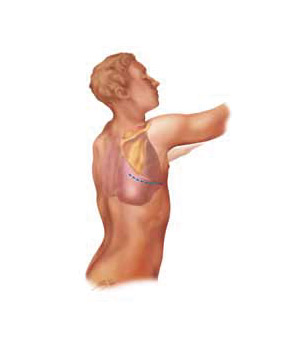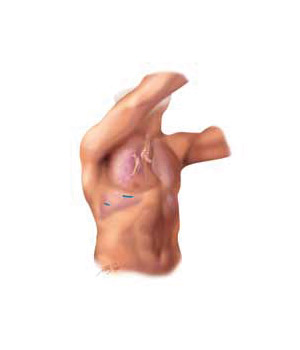With this approach, a surgeon removes all or part of a lung through a large incision on one side of the chest.
Thoracotomy is a more traditional open surgery approach and was the only surgical option to treat lung cancer — until more advanced medical techniques and equipment were popularized in the 1990s.2
VATS allows your surgeon to access and remove your cancer in a minimally invasive manner. Your surgeon will utilize 1-4 small incisions (2-6 cm) between the ribs to insert a camera and advanced instruments. The scope provides a magnified view, which allows the surgeon to identify the cancerous lung tissue and remove it from the body.
* VATS is associated with reduced cytokine production. Cytokines regulate the immune system. And certain cytokines associated with the body’s inflammatory response have been linked to a better lung cancer prognosis when they are at lower levels.3
Unlike open surgery, VATS doesn’t require rib spreading, so it’s a less invasive procedure. Long-term survival rates with VATS are equal to open thoracotomy for early stage NSCLC and some recent data suggest that the survival may be better. 3,5
| Compare Open Surgery vs Minimally Invasive6 | Thoracotomy (traditional open) | VATS (minimally invasive) |
|---|---|---|
| Pain | Incisions and your chest area may be painful for several weeks to months after surgery | While pain in the hospital will still occur, it is usually less than that experienced with a thoracotomy |
| Incision size | One large incision 10-15 cm | One main incision 4-6 cm (usually 4.5 cm); multiple additional incisions, typically 2-4 cm |
| Anesthesia | General | General |
| Length of hospital stay | 6-7 days | 3-4 days |
| Incision placement |  |
 |